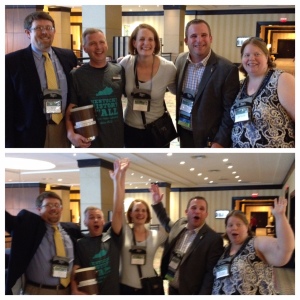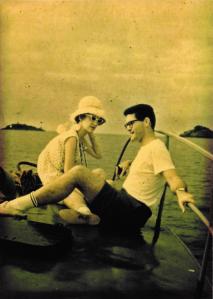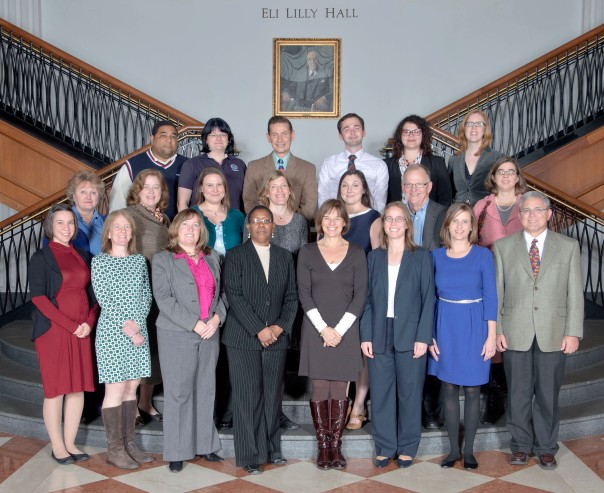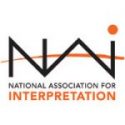Author Archives: Jamie Glavic
SHA is not just for rookies. It’s also for public history veterans!
When I attended the 50th Seminar for Historical Administration in 2009, I wasn’t sure what I would get out of it. I had 23 years in the profession, mostly as an administrator. Although I heard only positive reviews about SHA, how could I benefit from SHA?
As my historic site was approaching a major management change, I was encouraged to attend SHA. After two decades as an administrator, I was skeptical but excited. I initially concluded that SHA would at least be a good refresher, but ultimately it was much more than I anticipated.
I often compare SHA to a year of grad school condensed into just three weeks. One major difference is that SHA skips all the irrelevant debris professors tend to scatter throughout their classes. Time is precious, and SHA organizers and instructors understand this. As a result, SHA delivers an intense experience that is necessary for each attendee to become a better administrator, including the need for seasoned administrators to move beyond their respective comfort zones.
Throughout my career I’ve attended countless conferences and workshops across the country, listening to “talking heads” regurgitate text books I read as a college student. Contrary to the standard conferences that we’ve all attended, SHA provided ample time to listen to AND discuss issues of our profession with active leaders in the field. In addition to providing new information and unique perspectives, seminar instructors made themselves accessible throughout their brief time in Indy and have continued to be available “post-graduation.” Their in-depth feedback has continued to guide my professional actions.
My SHA classmates had the greatest impact on me personally. Their enthusiasm and fresh ideas reinvigorated my passion for the profession. With their friendships I returned home with the optimism I had 23 years earlier and ready to tackle the challenges ahead of me.
Thus, is there a “right” time to attend SHA? Yes, and that is anytime before retirement.
Mark Harmon is Executive Director of The Gaylord Building, a site of the National Trust for Historic Preservation. He holds a BA and MA in History from the University of Akron. He is an alumni of the 2009 Seminar for Historical Administration and the 2011 Preservation Leadership Training.
Class of 2009 wins the SHAmazing Class Trophy!
 I am thrilled to report that my class won the SHAmazing Trophy this year for contributing the most money to the Denny O’Toole scholarship fund. The O’Toole scholarship funds tuition for one worthy recipient to attend Developing History Leaders @ SHA every year. Denny O’Toole means a lot to my class – we were the 50th class to attend the Seminar, and also Denny’s last class (and we had John Durel there too!). Developing History Leaders is a great value, but we know that even a modest tuition fee is too much for some individuals and institutions to support.
I am thrilled to report that my class won the SHAmazing Trophy this year for contributing the most money to the Denny O’Toole scholarship fund. The O’Toole scholarship funds tuition for one worthy recipient to attend Developing History Leaders @ SHA every year. Denny O’Toole means a lot to my class – we were the 50th class to attend the Seminar, and also Denny’s last class (and we had John Durel there too!). Developing History Leaders is a great value, but we know that even a modest tuition fee is too much for some individuals and institutions to support.
It feels doubly good to honor Denny and also help make it possible for someone to attend the seminar.
After the class of 2012 won the trophy last year, we challenged each other to increase the size of our donation – if you want to claim the trophy for your class this we encourage you to do the same and make your donation at http://on.aaslh.org/DonationLogin. Remember that the SHAmazing trophy comes with more than just bragging rights – it’s also an ice bucket that always includes a bottle of bourbon. We’ll carry it proudly this year and see if another class can take it away from us in Detroit in 2016!
Trevor Jones, Class of 2009
Director of Historical Resources, Kentucky Historical Society
Remembering the Important Things: Applying Life-Lessons Learned at SHA
One of the most attractive aspects of our field is its assumed connection to good-will; the altruistic devotion to the betterment, the enlightenment, and the enrichment of those we serve through our organizations. In an all-about-me world, it is refreshing to think that people still selflessly rally around noble causes. I believe that at its core, our field is still selflessly devoted to noble causes—it is what we do. While the core of our work is praiseworthy, we who are leaders in the field know that it is… well… work. The shear amount of effort required to maintain our organizations is staggering and often exhausting. As well-meaning as we are as leaders, we can become consumed and burdened by the ins-and-outs of daily work and lose sight of the noble causes that attracted us to the field in the first place. The effects of this are often stirring, jarring, sobering. We may become preoccupied with business for business’ sake, or with building legacies and empires. We may lose sight of ourselves outside the workplace. We may fizzle out like a candle lit at both ends. How do we keep ourselves from such fates? We take time to remember what is most important in our work and in ourselves.
One of the most compelling sessions during my SHA experience was with Anne Ackerson regarding the importance of good mission statements. A good mission statement ought to point to an organization’s true north. The Henry Ford’s mission statement is a little long, but it is good… it defines, it gives purpose… it tells staff, partners, and guests why we exist… it speaks to what we do and what we will continue to do in the future.
The Henry Ford provides unique educational experiences based on authentic objects, stories, and lives from America’s traditions of ingenuity, resourcefulness, and innovation. Our purpose is to inspire people to learn from these traditions to help shape a better future.
The Henry Ford is a very large and complex organization with 2,000 employees working across five large venues: Greenfield Village, Henry Ford Museum, Ford Rouge Factory Tour, and the Benson Ford Research Center, and IMAX Theater. Over 400 interpreters engage guests with the Institution’s core stories across its venues. It is vital that this large group keep sight of mission on a daily basis. Every morning, groups of interpreters meet with their managers and supervisors across campus for daily briefings. I am thrilled to be able to meet with these groups on a rotating basis. Whenever I do, I recite The Henry Ford’s mission statement—not for trite or cheesy reasons—but because (as I remind my interpreter colleagues) our mission outlines why The Henry Ford exists, why we have jobs, why we tell the stories we tell. This group hears mission so often that many interpreters have it memorized… some even recite it along with me. During morning briefings, I often ask staff how their work on any given day fits into the mission. I am often very encouraged by the responses I hear. Such familiarity with mission helps each interpreter put his or her work in context with the larger organization, and reminds him or her of why it matters. As leaders in the history field, it is vital to remind ourselves and our colleagues why our respective organizations exist. This may be done simply by keeping mission forefront in conversation and thought. How long has it been since you looked at your organization’s mission statement? Do you know it? Does your staff know it? Does it impact your daily work? Without a noble purpose—a noble mission, and without examining that mission regularly, an organization is prone to fragmentation and its employees to disenfranchisement.
Finally, it is vital to remember personal core values and motivations that extend beyond the workplace. Another memorable session during my SHA experience took place on the last day of our three-week seminar. This session brought some of our class to tears…literally (readers, no laughing allowed)! Trina Nelson Thomas reminded my classmates and me that work is only one component of our very complex lives. As leaders in the field, this is sometimes difficult to grasp. We are often highly-dedicated people who give much of ourselves to our vocations. The history we interpret is very complex, and so are we. In order to maintain a healthy perspective in my own work, I have to remember that, in addition to being a museum professional, I love reading history (shocker); I am a music lover; I am inspired by rolling mountains, raging seas, and open fields; I love great meals and conversation; I covet the time I spend with wonderful family and friends; I take great joy in studying the theology of my Christian faith. I am so much more than my work. Keeping that in mind ultimately helps me perform more strongly in my role at The Henry Ford. What motivates you outside of work? What brings you joy and fulfillment apart from your job? As leaders we must remind ourselves that we are more than our museums… as much as we love them.
The field of history is filled with good will— with noble causes. As leaders in the field we will better serve these noble causes if we maintain perspective— if we remember what is most important. Keeping in the forefront of my mind the mission of my organization while taking time to celebrate myself as a well-rounded individual has helped me in this task. I hope that it may help you as well.
Ryan Spencer (SHA ’12), The Henry Ford
Last Call for the SHA Wednesday Workshop at AASLH
There is still space available for participants in the SHA Wednesday Workshop at the AASLH meeting in St. Paul. During the afternoon of 9/17, SHA alums Tim Hoogland (Minnesota Historical Society) and Stacia Kuceyeski (Ohio History Connection) will explore the rewards and challenges of working with advisory groups. Tim will be presenting on the Indian Advisory Committee that informs the work of MNHS while Stacia shares her work with the GLBT community in Ohio. As a group we will discuss specific challenges you are encountering in your work. You will leave the workshop with helpful insights on how your organization can benefit through thoughtful engagement with community stakeholders.
Prospective SHA applicants will also get a preview of the SHA instructional model and the organization of the seminar experience in Indianapolis.
To register, contact Tim Hoogland at tim.hoogland@mnhs.org. He will pass along your information to conference organizers at AASLH who will take care of invoicing you for the $45 registration fee.
The SHA Wednesday Workshop: Preview, Renew, or Refresh your Leadership Potential
 Are you interested in attending SHA but want to try it on for size first?
Are you interested in attending SHA but want to try it on for size first?
Or, are you an alum wishing you could revisit SHA?
Well, if you’re headed to St. Paul for the AASLH Annual Meeting next month – listen up!
Tim Hoogland and Stacia Kuceyeski are chairing the SHA Wednesday Workshop on September 17 from 1:30-5 pm.
What’s the SHA Wednesday Workshop all about?
The SHA Wednesday Workshop is an opportunity for prospective SHA participants to experience the SHA learning environment for the first time. The seminar is also an opportunity for SHA alumni to reunite and gain additional professional development in the SHA format they know and love (and probably miss). Begin your conference experience with an active, challenging, and thought-provoking experience designed to develop history leaders. The program focus for this year’s SHA Wednesday Workshop will be working with advisory groups. Sessions and activities will focus on what leaders need to know about developing and sustaining advisory committees using American Indian nations and the GLBT community as case studies. These two distinct, and important, constituencies present opportunities for museums and historical organizations to better meet their missions through sustained advisory relationships. After the SHA Wednesday Workshop, SHA alumni will be available to continue the discussion, answer questions, and share the benefits of the SHA experience for prospective SHA participants.
The cost for this workshop is $45. To add this workshop to your Annual Meeting registration please send an email to membership@aaslh.org or call 615.320.3203.
We Have A Fundraising Winner!
The fundraising results are in and we have a new champion in this year’s class fundraising competition. The congratulatory trophy will be awarded to…
The Class of 2012 who raised $1,380 for the Denny O’Toole Scholarship fund! The Class of 2012 will be presented with a trophy at the SHA Reception at the AASLH Annual Meeting (appropriately themed “Greater than the Sum of Our Parts”) in St. Paul, MN. Congratulations!
Last year’s winner, the Class of 2011, finished second with $1,141.11.
This year’s competition raised a total of $4,383.11 surpassing the $4,000 goal of the SHA Alumni Committee!
Thank you to everyone who donated. Your support of this program speaks volumes of your dedication to the field. And if you didn’t donate – the link to do so is always available. Click here to make a donation.
Again, congratulations to the Class of 2012 – you are truly SHAmazing!
DHL@SHA Alums: Be a Mentor!
When I attended Developing History Leaders at SHA (DHL@SHA) in 2010, I discovered a great resource in Ben Simons, a colleague and an DHL@SHA graduate (Class of 2008). A couple of times in the weeks leading up to my departure, he shared a few words of advice and encouraged me to really think about what I wanted to get out of the experience. As a result, I considered it more than I would have without his suggestion. As I scrambled to wrap up my projects and tasks at the office, prior to my departure for DHL@SHA, Ben put my mind at greater ease. I asked him about his experience. I asked him about Indianapolis. I asked him about the sessions and his fellow participants. I appreciated his openness and willingness to entertain my questions. He also assured me, when I began putting my introductory presentation together (at the last minute), that this was the case with the majority of the other participants. And when I arrived in Indianapolis, Ben sent me a few e-mails containing helpful reminders, words of encouragement, and advice related to DHL@SHA. These brief communications of just a few words enhanced my experience in ways I continue to be grateful for. Ben was my informal mentor.
DHL@SHA instituted a mentor program in 2011, where participants get matched with an alumni mentor. If you are in incoming DHL@SHA candidate for the class of 2014, I encourage you to utilize the mentor option. If you are an alum, please consider being a mentor. It’s easy, all you have to do is sign up anytime between now and the beginning of August.
In 2012, I signed up to be a mentor, and had the pleasure of working with Jessica Dorman and Emily Dunnack (both class of 2012). Jessica, Emily, and I hit it off from the beginning. I had separate conversations with each of them by phone a few weeks before DHL@SHA and shared a few e-mail messages with each of these lovely ladies while they were in Indianapolis. After the three of us began having regular phone conference calls to first talk about the value of their experience and now we utilize this opportunity to share, explore, learn new things, and stay connected. I’ve never met Jessica or Emily in person, but feel incredibly connected to them professionally and personally. One never knows what will develop, but one does know that with DHL@SHA it is a valuable learning opportunity to be involved with!
To sign up to be an SHA mentor for a member of the 2014 class, please e-mail Kim McCray at kmccray@shelburnemuseum.org
Kim McCray (SHA ’10), Shelburne Museum
If not now, then when? Apply for DHL@SHA today!
This is the season! The season for conferences and networking and being inspired by innovation, trends, and best practices in the field. You have been encouraged by supervisors to take advantage of meetings of museum professionals; or, you have individually taken the initiative to develop yourself as a better leader. Usually, we fall into a spectrum – sometimes we get external support and sometimes we are internally motivated.
No matter what your individual case may be, take a moment to consider applying for Developing History Leaders @SHA (DHL@SHA) this year. Yes, the applications are due on Monday; but, if not now, then when?!?! During the seminar, you will learn from experts in the field, you will be supported by like-minded colleagues from around the nation, and you will experience increased confidence in your own abilities and your potential as a leader.
People are always a little worried about the time commitment. Yes, it’s a lot of time. However, it is well worth it! Speak with any of the alumni or seminar faculty and you might just be overwhelmed by the amount of enthusiasm there is not only for the seminar itself, but for the need to have such a concentrated time commitment. I would not have had it any other way.
So, take a few minutes and tell us why you should be in this year’s class! Why are you a natural leader already? What skills are you hoping to build? Where do you see yourself in five years? Take a deep breath, take the initiative, and fill out that application today!
Dina Bailey (SHA ’10), National Center for Civil and Human Rights











You must be logged in to post a comment.